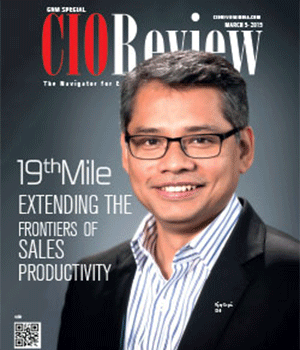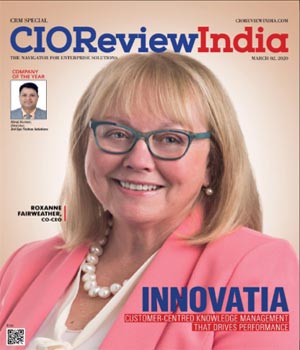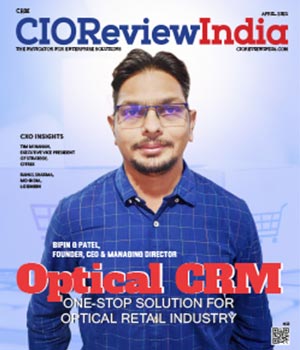
NPS 2.0 - Heed What They Do, Not What They Say
Matthew Kravitz, CIO, DTT Surveillance | Wednesday, 28 December 2016, 12:32 IST
 How likely is it that you would recommend [brand] to a friend or colleague?” How many times are you asked that a week? The 0-10 response does provide some valid insight into customer satisfaction and loyalty. For those of us that are working with “recurring monthly revenue” business models, it’s critical to have a pulse on our customers and create a baseline of customer satisfaction for renewals and projected attrition. And for those other business models like airlines, rental cars, restaurants, the aggregate score still can help you track and trend the perception of the marketplace’s customer satisfaction for your corporation.
How likely is it that you would recommend [brand] to a friend or colleague?” How many times are you asked that a week? The 0-10 response does provide some valid insight into customer satisfaction and loyalty. For those of us that are working with “recurring monthly revenue” business models, it’s critical to have a pulse on our customers and create a baseline of customer satisfaction for renewals and projected attrition. And for those other business models like airlines, rental cars, restaurants, the aggregate score still can help you track and trend the perception of the marketplace’s customer satisfaction for your corporation.
However, there are a few problems that I’ve experienced with trying to capture NPS scores. The most prominent issue is that it’s unlikely you’ll get a response-most companies average ~10 percent on survey responses. The other issue is that people are most likely to respond if they’re really happy or really annoyed. So what we’re left with is an incomplete data set, and one that’s really polarized.
This reality has left us with an opportunity to supplement the NPS question; I refer to this supplemental technique as “NPS 2.0.” This isn’t necessarily an evolution but rather an extension that can help fill in the gaps. The idea is rather simple: Find ways to systematically calculate and analyze your customer’s usage and adoption of your company’s services and calculate a numerical score. The complexity of course is how to automate this and properly calculate an accurate predictive score of future customer behavior. Here are some ideas to get you started.
First, identify the criteria that would “indicate” usage and adoption. Some example of these measurable inputs could be: how often (or long) users login or use the service, the percentage of products in your portfolio that are purchased, or how many support requests are created. Ideally you’d want 4-8 different Inputs, where the numerical answers represent a level of usage of engagement or adoption. For example, a Satellite TV Company could create an Input called “Hours of TV a Day.” So 1-3 hours a day of watching TV would earn three points, 3-5 hours a day would earn six points and so on. You would then create the same point ranges for your other Inputs that you define. As these Inputs are quantitative in nature, they can be batched and automated with little manual intervention.
Next, create a scoring system where the total possible score is 100 points, this is where the art of fine-tuning begins. Perfect distribution is a bell-curve of scores, with ~20 percent good and ~20 percent on the low end. You can manipulate this curve by “Weighting” each of your Inputs. Perhaps the Hours of TV Watched in a Day Input is more critical factor than the number of support requests in a month, so weighting multipliers can be created so each Input has a different contribution towards the total score. For example 40 percent of the total score could be calculated from the number of Hours TV is watched in a day and the remaining 60 percent from your other three Inputs. Trial and error of the weighting will ultimately give you that perfect bell curve and distribution of scores. And in the case where a NPS Score does exist for the Customer, you can include that as an Input, but you no longer need to rely on that one data point.
So what now? Get this NPS 2.0 score into the hands of your customer-facing representatives! Data and information about true usage and adoption of your products and services will help you better align and allocate your precious internal resources to customers that are truly on the cusp of a renewal decision.
CIO Viewpoint
Measuring Machine Learning Bias
By Dr. Supriya Ranjan Mitra, Director, IT at Schneider Electric
Customer Analytics - The Cornerstone of CRM...
By Yagnesh Parikh, CTO, ICICI Securities
Why is the Digital Customer Experience Truly...
By Sven Gerjets, Former CIO, Time Warner Cable
CXO Insights
What's Wrong with Current CRMs and Future of...
By Satish Patil, PhD (Founder and CEO), Mitibase Technologies Pvt Ltd
Top Five Customer Service Predictions For 2021
By Suman Reddy, MD, Pegasystems India
Work 2021: Prepare For A Flexible Future









